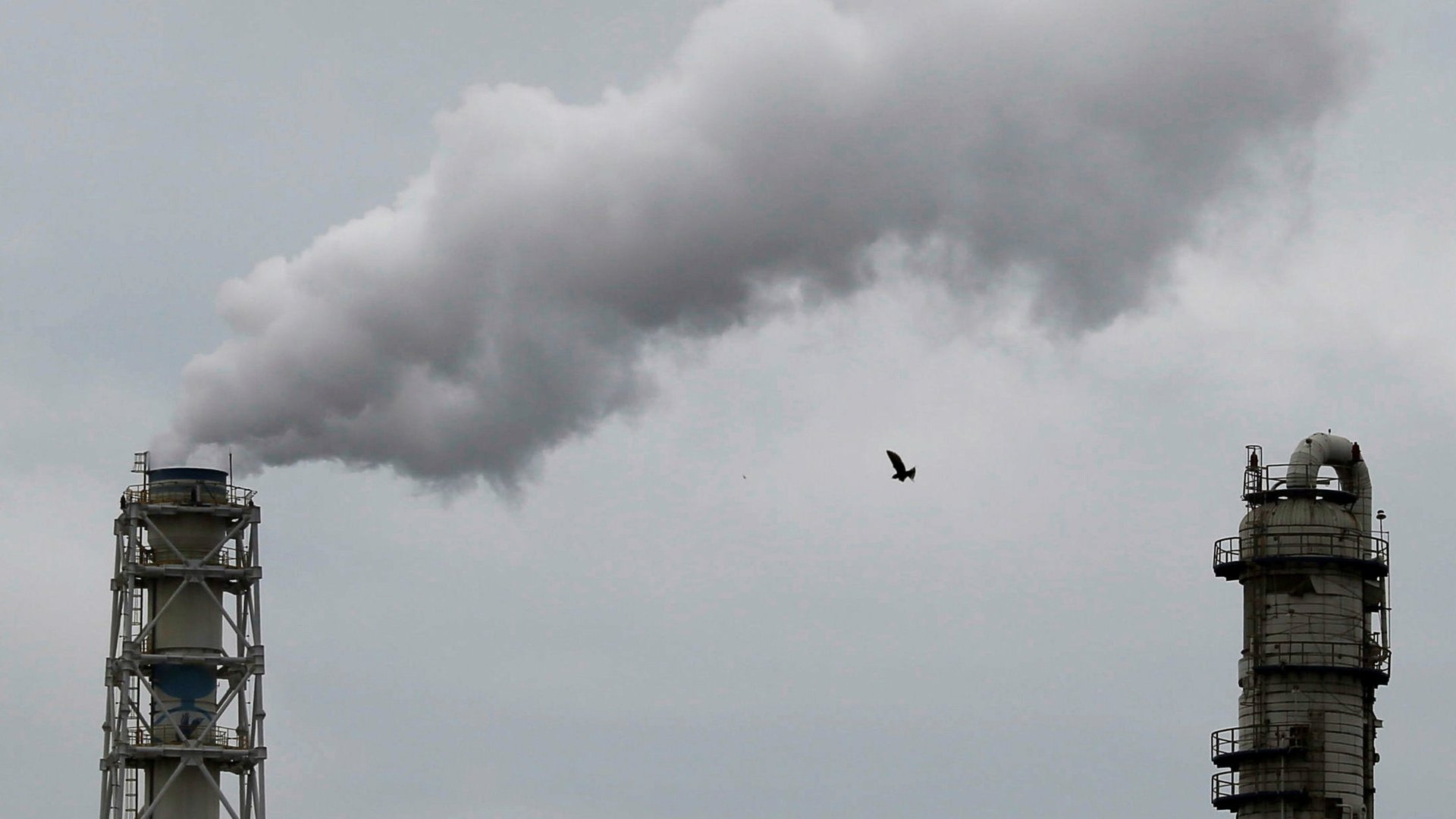Norway wants to literally bury other countries’ carbon emissions—in its own backyard
Norway’s wealth was built on mostly pumping fossil fuels out of the ground. In fact, one of Norway’s sovereign wealth funds is also known as the “Oil Fund.”


Norway’s wealth was built on mostly pumping fossil fuels out of the ground. In fact, one of Norway’s sovereign wealth funds is also known as the “Oil Fund.”
But now, with global warming raising an alarm, the Norwegian government wants to find ways of making money by putting the resulting carbon-dioxide emissions back underground. It sounds crazy, but Norway has been slowly building the capacity and technology to make it work.
In 1991, the government levied a carbon tax on fossil fuels, and since then has slowly expanded the tax to cover other sources that produce carbon dioxide. In 1996, to avoid heavy taxes, Statoil, the country’s national oil and gas company, began capturing CO2 emissions from its natural-gas processing and pumping them into empty gas fields.
The technology, called carbon capture and storage (CCS), had been around for decades. Years ago, oil companies found a way to pump CO2 into mature oil fields and, ironically, used the process to eek out any remaining oil through what’s called “enhanced oil recovery.” But Statoil’s CO2 Sleipner gas field storage project was the first effort to pump carbon dioxide underground for no other reason than to ensure it doesn’t end up in the atmosphere. In 2008, the company started another storage project in the Snøhvit gas field. Between these two operating projects, Statoil now puts more than 1 million metric tons of CO2 into the ground every year. In total, it has captured in excess of 20 million metric tons of CO2 as of 2017.
Now the Norwegian government has tasked the state-owned CCS enterprise Gassnova with a project to bury even more carbon dioxide than it already does.
Even if Norway cuts down on fossil-fuel use through, say, converting gasoline-powered cars to electric ones and shutting down gas-fired power stations, some industries have no other option but to keep emitting the greenhouse gas. The new Gassnova project will attempt to alleviate the environmental impact of these industries by capturing carbon dioxide from an ammonia factory (Yara), a cement factory (Norcem), and a waste-to-energy plant (Klemetsrudanlegget)—all located in and around Oslo. Then, Gassco, a Norwegian company specializing in gas transport, will build pipelines transport the gas to an offshore site, where Statoil—along with multinational oil giants Shell and Total—will inject it in geological storage.
More importantly, Gassnova believes there may be enough space under the Norwegian continental shelf for others to ship their CO2 to the country. There would, of course, be a cost per metric ton of carbon dioxide injected. A Gassnova spokesperson said it’s too early to estimate what it might be; if the price is too high, it’s likely no one will be interested in taking up the offer.
The companies involved have all begun doing feasibility studies—including to assess the injection costs—which are expected to be completed by 2019. Once the results are in, Gassnova will decide whether or not to commit as much as 12 billion Norwegian krone (about $1.5 billion) to scale up the project by 2022.
With the latest CCS project, Norway is making three bets: First, the country is wagering that its high carbon tax will provide enough incentive for companies in Norway to seek out methods to bury carbon dioxide. That’s a relatively safe bet, given the success of Statoil’s past projects. Second, it expects that cost of providing a service to bury carbon dioxide won’t be too high. Finally, the country is speculating that as climate change gets worse, other countries will increasingly realize that they too must deploy CCS, and will look to Norway for a solution. That’s a bet with lower odds and higher stakes, but there are a few reasons it might just pay off.
For one, building this new CCS project will give Norway a first-mover advantage, which will likely lower costs for future CCS projects. Moreover, though many countries have the option to deploy CCS technology in their own territories, not everyone likes the idea of having a pollutant buried under them.
Though doing anything that involves injecting fluids underground carries risks, a 2017 study by researchers at Princeton University has shown that the chances of carbon dioxide leaking out from deep storage is minimal. Still, in 2009, for instance, a German coal-fired power station promised to capture, transport, and bury emissions in the northern part of the country. But Germans opposed the idea, and as a result, the project kept venting carbon dioxide to the air, instead of burying it. Norway provides a way out for countries like Germany where CCS has a public-relations problem.